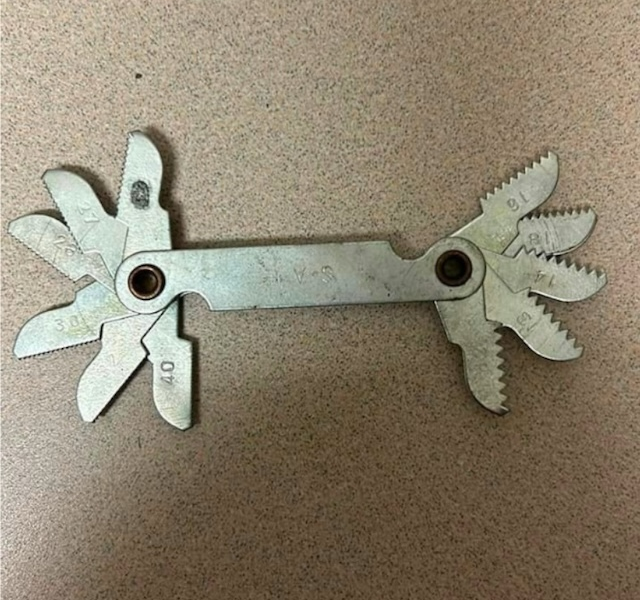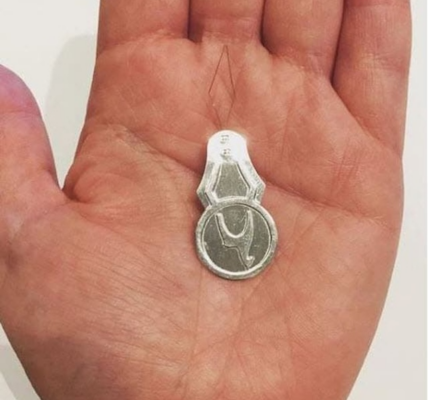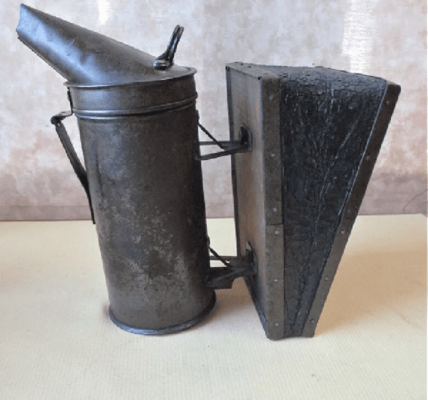The Unsung Hero of Precision: The Thread Pitch Gauge and Its Role in Industrial History-s1
In an age where digital tools dominate, some might consider manual tools relics of the past. However, these tools tell a story of innovation and craftsmanship that shaped entire industries. One such tool, the thread pitch gauge, may seem unassuming but was once a vital instrument in ensuring precision in mechanical work. If you’ve ever spent time in a workshop or around mechanics, you’re likely familiar with this indispensable device. Let’s explore the history and significance of the thread pitch gauge, a tool that revolutionized how we measure and build.
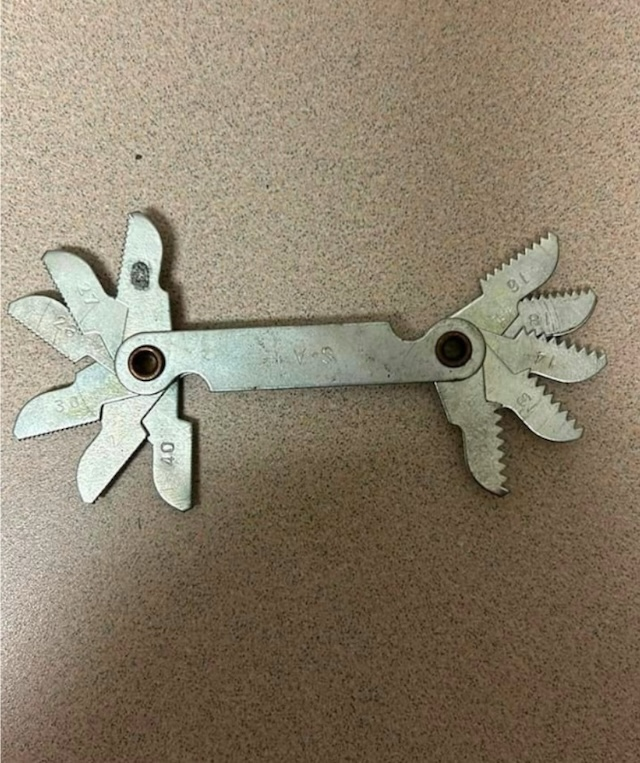
A Glimpse Into Forgotten Tools: The Thread Pitch Gauge
In today’s world, where CNC machines and digital calipers reign supreme, tools like the thread pitch gauge might appear obsolete. Yet, just a few decades ago, this tool was essential for anyone working in manufacturing, automotive repair, or metalworking. The thread pitch gauge represents an era when precision was achieved through hands-on skill and careful measurement.
A Look Back at Forgotten Tools
This small, pocket-sized device consists of a series of metal blades, each with teeth of varying sizes. These teeth correspond to different thread pitches, allowing the user to quickly determine the size and spacing of screw threads. For anyone who needed to match screws and bolts with exact precision, the thread pitch gauge was a go-to tool. It symbolizes a time when manual methods and deep technical knowledge were the backbone of industrial progress.
At first glance, the thread pitch gauge might look like a simple collection of metal strips. But each of those strips plays a crucial role in measuring the pitch of screws or threaded objects. The pitch, essentially the distance between threads, is critical in ensuring that components fit together perfectly. The gauge’s teeth fit into the grooves of a screw, and if the match is perfect, the pitch is identified by the marking on the blade.
Thread pitch gauges come in various sizes, some even combining metric and imperial measurements. This versatility made them indispensable in a range of industries, from automotive to aerospace. The tool’s simplicity, combined with its ability to provide precise measurements, made it a favorite among mechanics and engineers alike.
The Evolution of the Thread Pitch Gauge: A Historical Perspective
The history of the thread pitch gauge is deeply intertwined with the industrial revolution of the 19th century. As machinery became more complex, the need for precise tools grew. Screws and bolts were becoming standardized components in machines, making accurate thread measurement crucial.
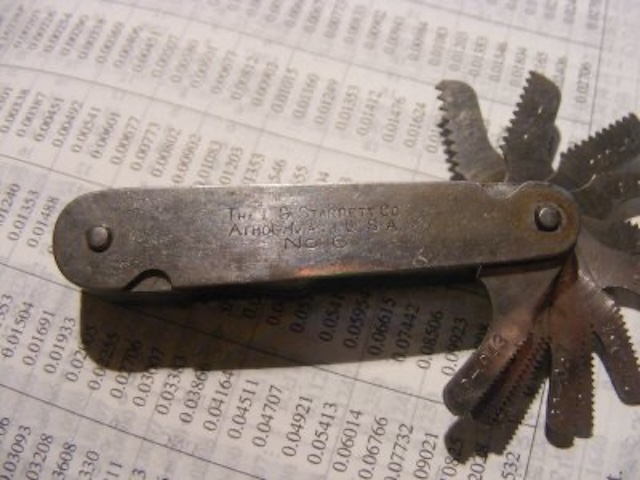
Before the invention of tools like the thread pitch gauge, machinists relied on guesswork or labor-intensive hand-filing to ensure that threads matched. This was not only time-consuming but also prone to error. The development of the thread pitch gauge marked a significant advancement, providing a quick and reliable method for measuring threads.
The gauge quickly became a staple in industries that required precision, such as automotive and aerospace engineering. It was an essential tool for ensuring that parts fit together as intended, preventing costly errors and ensuring the safety and efficiency of machinery.
How the Thread Pitch Gauge Works and Its Significance
The beauty of the thread pitch gauge lies in its simplicity. To use the gauge, a technician selects a blade from the tool and aligns it with the threads on a screw or bolt. If the teeth fit perfectly, the user can immediately identify the pitch. If not, they move on to the next blade until they find the right match.
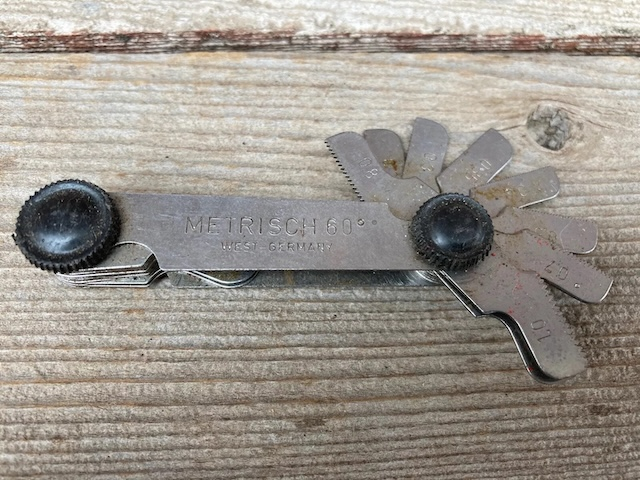
This straightforward process was a game-changer in industries where precision was paramount. Incorrect thread pitch can lead to serious issues, from minor inconveniences to catastrophic failures. The thread pitch gauge ensured that every screw and bolt was a perfect fit, contributing to the safety and reliability of countless machines.
The Role of the Thread Pitch Gauge in Various Industries
While the thread pitch gauge is most commonly associated with mechanical and industrial settings, its applications extend far beyond. Here are some areas where this tool played a crucial role:
- Automotive Industry: Mechanics used thread pitch gauges to match screws and bolts during engine assembly or vehicle repair, ensuring every part was securely fastened.
- Aerospace: In aviation, precision is critical. Engineers relied on thread pitch gauges to make sure every component, from screws to bolts, met exact specifications.
- Construction: Builders and carpenters used thread pitch gauges when working with heavy machinery or installing equipment that required precise fastening.
- Home Repairs and Hobbies: Even DIY enthusiasts found the thread pitch gauge invaluable when identifying thread sizes for home projects or repairs.
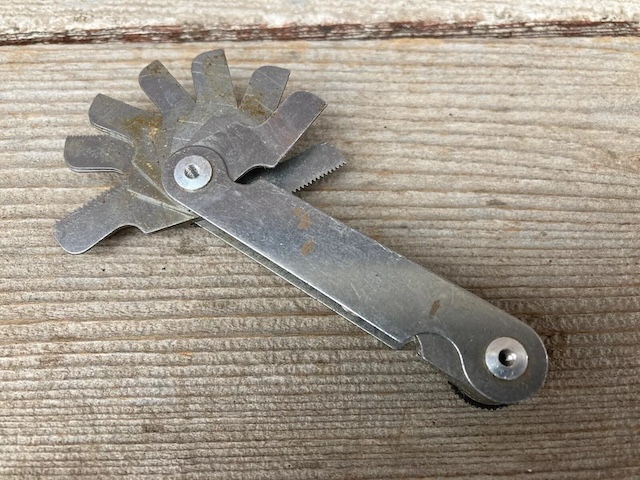
Despite its simplicity, the thread pitch gauge played a vital role in ensuring the safety, durability, and reliability of mechanical systems across various industries. A minor error in thread size could lead to significant problems, making this tool indispensable for precision work.
The Nostalgia and Collectibility of the Thread Pitch Gauge
In our modern, digital-focused world, tools like the thread pitch gauge are seldom seen in everyday use. However, for those who worked with them or who collect vintage industrial tools, the thread pitch gauge holds a nostalgic appeal. Collectors often seek out vintage gauges for their craftsmanship and historical significance. These tools, typically made from durable metals like stainless steel, were built to last and often still function perfectly after decades of use.
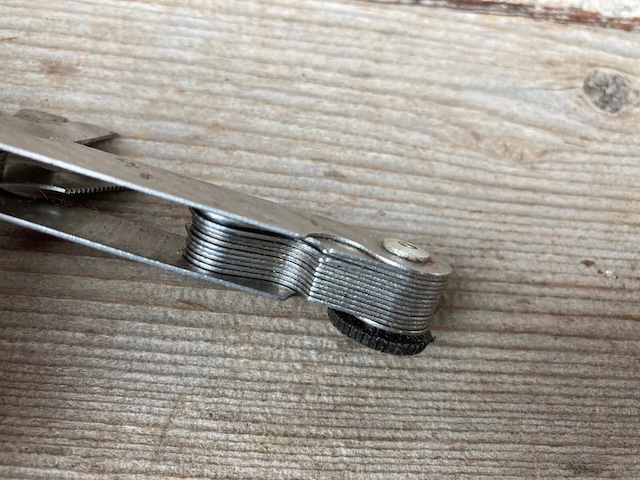
For enthusiasts, owning a vintage thread pitch gauge is like holding a piece of industrial history—a tangible reminder of a time when manual tools were the foundation of technological progress.
Conclusion: The Enduring Legacy of the Thread Pitch Gauge
The thread pitch gauge may be a simple tool, but its impact on the world of industry and mechanical work is profound. This unassuming device helped ensure the precision and safety of countless machines, from cars to airplanes. As we continue to embrace digital technology, it’s essential to remember the tools that laid the groundwork for modern advancements. The thread pitch gauge is more than just a measuring device; it’s a symbol of an era where precision, craftsmanship, and hands-on skill were at the heart of innovation.
